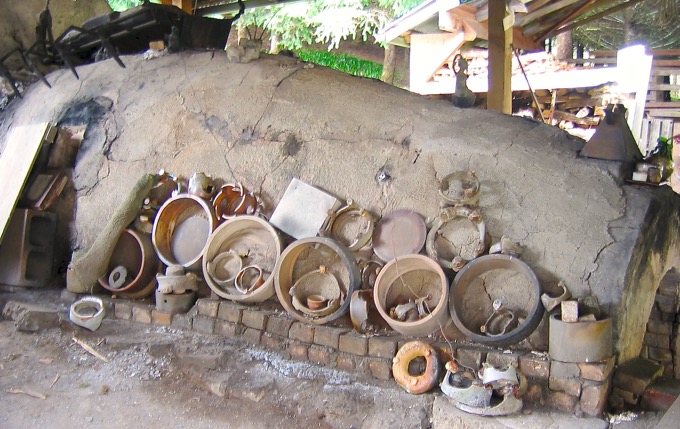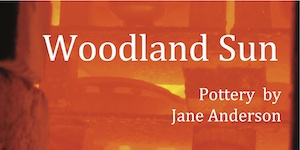High-Fired, Wood-Fired Pottery

Wood-fire ceramic artists and potters create in partnership with fire and it is wood-fire which determines the final look of the clay work. The ceramist is in charge of fabricated textures and form of the work, the slip or glaze applications, and how the work is placed in the kiln. After that the firing process takes over.
A high fired, wood fired ceramic is often an artifact of an exciting, intense, and exhausting firing event. During an anagama firing, which can last up to 100 hours, groups of potters work together in teams around the clock to continuously supply wood to the fire that very rapidly consumes the fuel and takes a kiln to temperatures exceeding 2300 degree. The attending potters follow the progress of the firing by reading the pyrometer, the deep bed of embers, the roar and quiet of the flames, and the columns of smoke out of the kiln’s stack. As the firing proceeds, layers of ash land and flames lick the pots’ walls and create a unique surface with a wide variety of texture, color, and markings. For example, the closer a piece is to the fire-box the more likely the side facing the flame will receive a heavy coat of ash often leaving a rough ashen surface. In contrast, the sides of a piece not facing the flame can have rich, smooth flashings of gold, orange, and blue or not.
Many folks enjoy high fire, wood-fired ceramics not only for their natural beauty, but also because they capture a lively dance between the potters, pots, fire, and ash. Every wood-fired pots is unique: some with cracks, others with drips of kiln shelf, others with wadding marks, or broken edges. They often have a Wabi Sabi beauty, the aesthetic of things in existence, that are “imperfect, impermanent, and incomplete”.
Some Types of High-Fire, Wood-fire Kilns

Anagama



